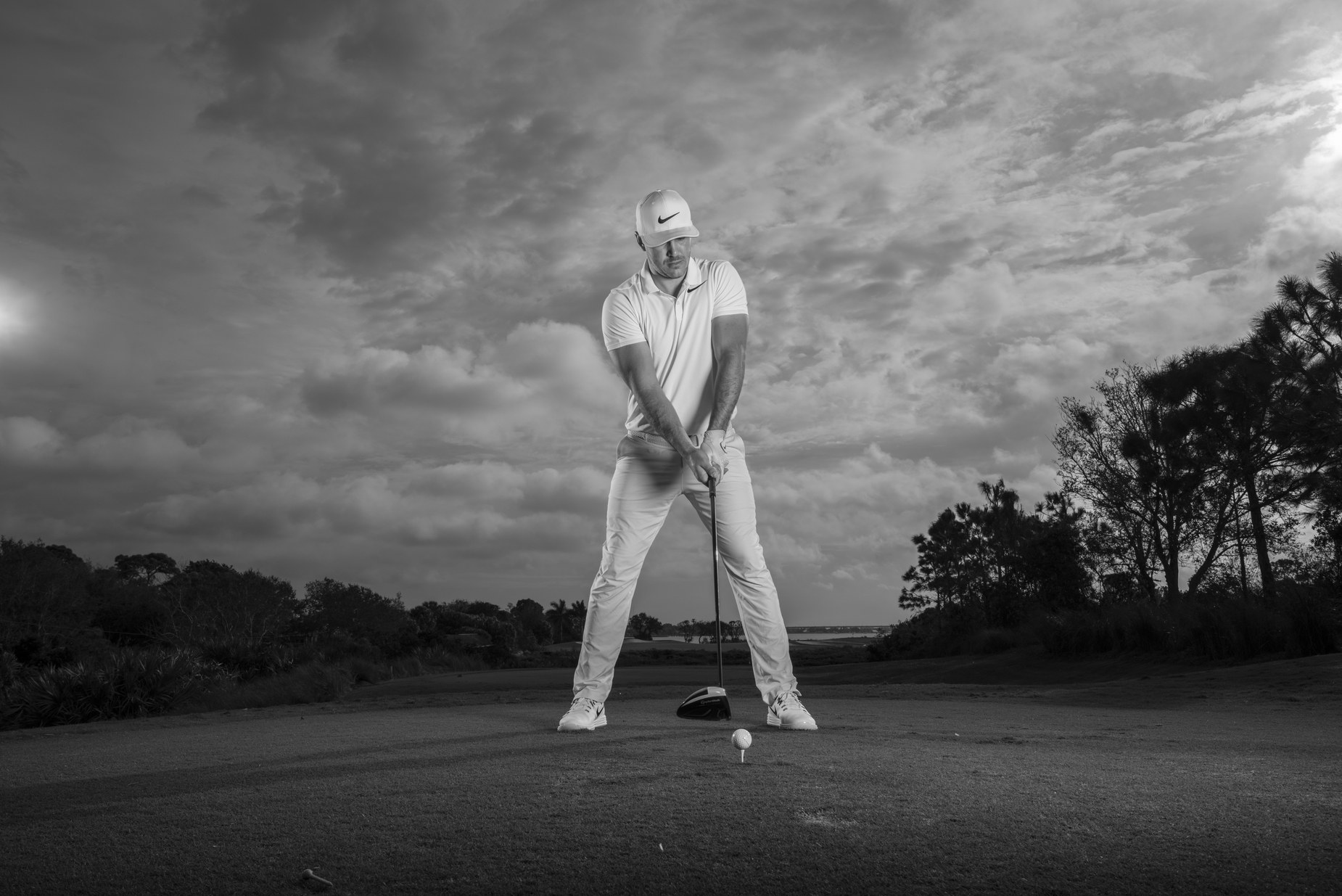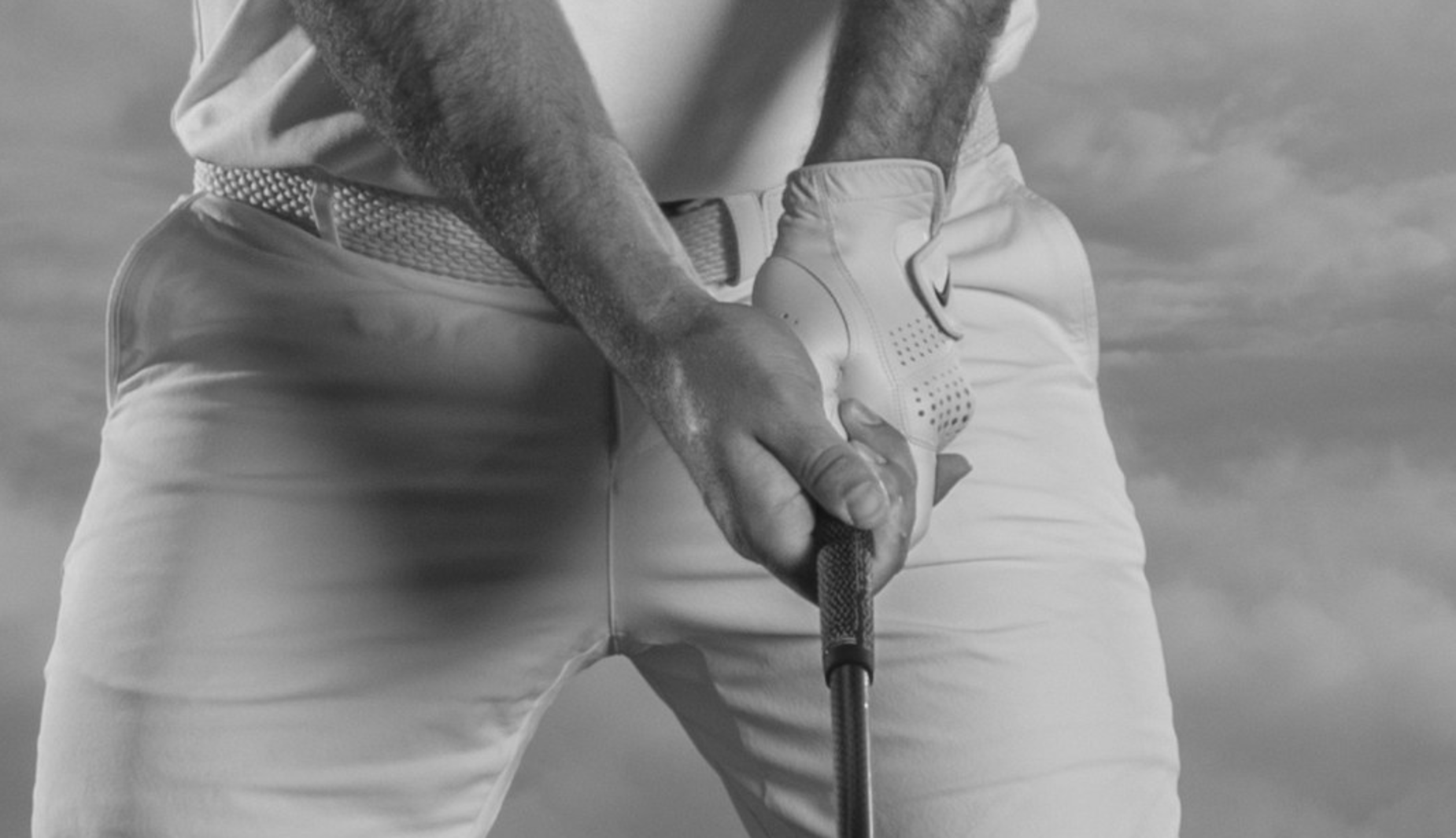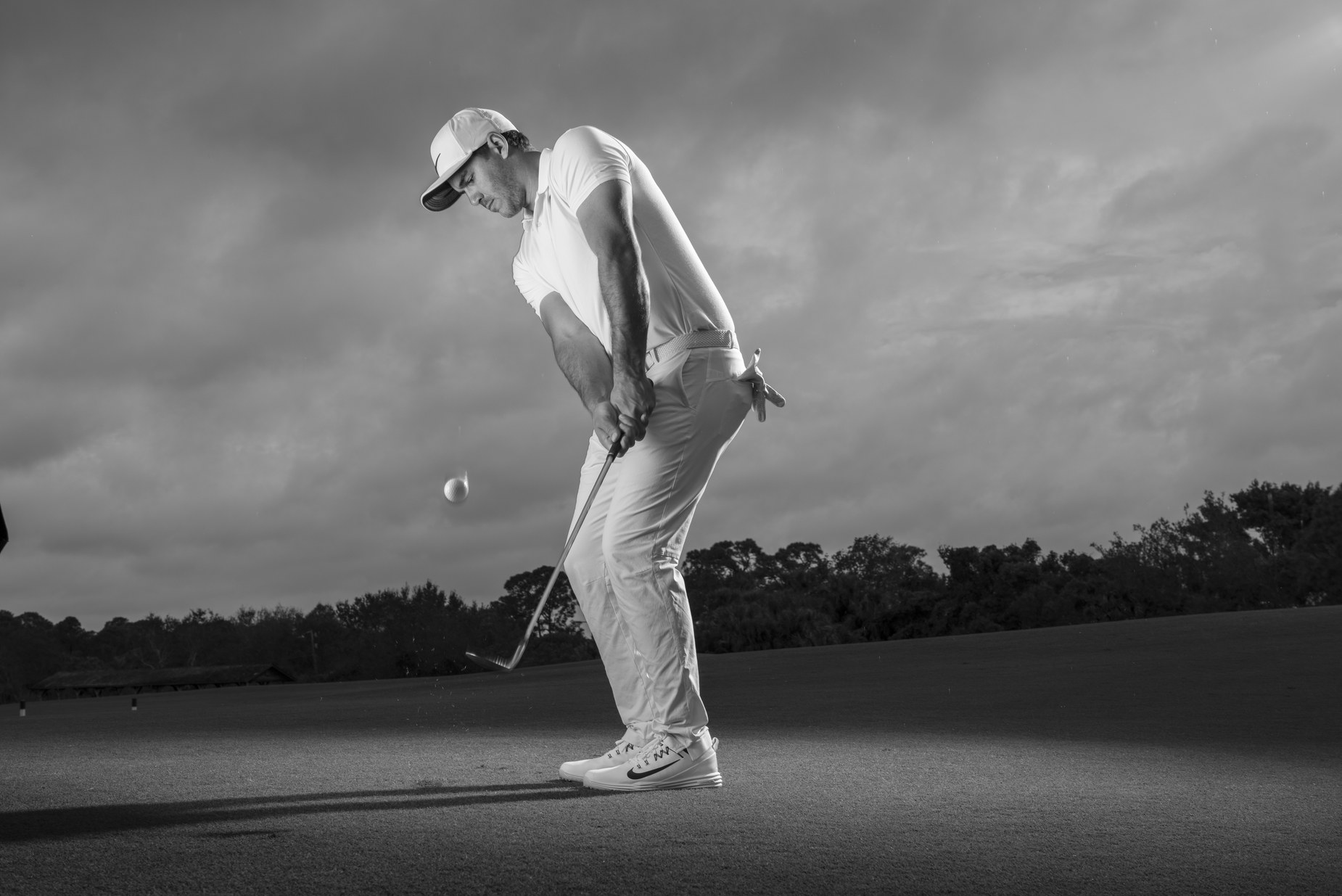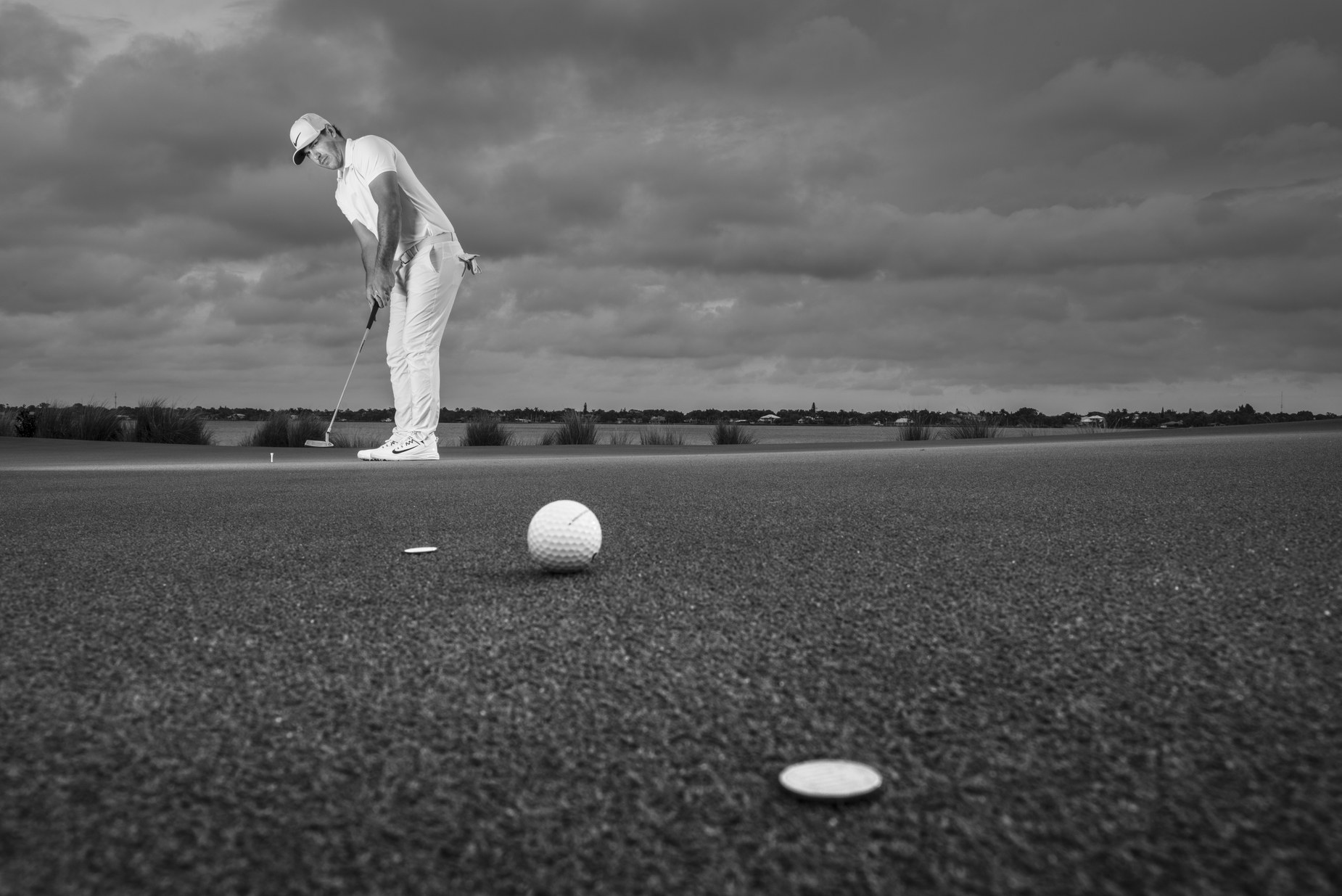You might not have his power or hand-eye coordination, but there’s plenty the four-time major champion does that you can do as well
By Ron Kaspriske
When it comes to the promise of playing better golf, we freely admit that hyperbole occasionally creeps into our headlines. That said, this isn’t one of those times. You might not have Brooks Koepka’s biceps or ball-striking ability; his swagger or swing speed, but there are things he does on the golf course that you can easily incorporate into your own game. Here are six.
1. SET UP LIKE A BOSS

All pictures Dom Furore.
Brooks Koepka doesn’t set up to hit his driver like a golfer; he sets up like an athlete. Big difference. Everything from the width of his stance (wider promotes a more stable platform to swing from) to the tilt in his torso (allows him to sweep the ball off the tee) suggests he’s preparing to deliver some energy into the hit. Also note that he’s hovering the club. You might think he’s tensing up before he takes the club back, but the opposite is true. Hovering the club helps keep him completely relaxed.
The takeaways: Stand a little wider with the driver; tilt your spine away from the target; don’t swing back until you feel completely relaxed.
2. GRIP IT FOR POWER AND PRECISION

Like every skilled player, Koepka grips the handle of his clubs predominantly in his fingers—not deep in the palms. That allows him to release the club with whip-like action through impact. Another thing to note is that he grips the club in a strong position with his dominant hand, the right hand, but his left-hand grip is closer to neutral. This is very similar to how Tiger Woods grips the club and suggests he’s learned to blend power (strong right hand) with control (weaker left hand).
The takeaway: Grip the club more in your fingers; hold the club with your weaker hand so the crease between the thumb and forefinger points more toward your chin.
3. LOAD, BUT DON’T OVERLOAD

Koepka reaches the top of his swing fully wound, but he’s not pushing past a limit where he feels “tight.” In fact, at the top, he’s still fairly relaxed, especially in his hands and arms. Another thing to note is that he’s not resisting rotation in his hips. He’s letting them move away from the target along with his torso. This might sound funny, but he’s maintained poise all the way to the top.
The takeaway: Let your hips and torso rotate away from the target together, but don’t turn past a point where you feel tight in your upper body; stay relaxed in your hands and arms all the way to the top of the swing.
4. STAY BACK AND DOWN

Brooks can nuke his irons because he comes into the ball with the clubface noticeably delofted and still moving downward after the strike. He’s able to do this because he stays committed. What does that mean? Look at his posture at address as he stares down target. Then look at his posture at impact. Notice how similar it is in the upper body? His legs have straightened to apply some force into the hit, but he’s not rising out of his address posture with his torso. He’s committed to swinging down and through the ball, then the turf.
The takeaway: Stay in your address posture as you swing down—don’t lurch toward the ball with your pelvis; get the very bottom of your swing ahead of the ball’s position on the turf.
5. DIAL IT BACK AROUND THE GREENS

Koepka hits chips, pitches and even three-quarter wedge shots with minimal effort. He narrows his stance, sets up a touch open in relation to the target and let’s his body pivot control the through-swing. You’ve heard of aim small, miss small. This is swing small, miss small.
The takeaway: Narrow your stance considerably from what it is for full swings; control your club’s through-swing motion largely with body pivot; dial back your effort considerably when hitting short-game shots (except in the bunker or deep rough).
6. CONTROL YOUR PUTTING SPEED

Without a tour-pro caddie, a green-reading book or two months of classes learning AimPoint, you can’t expect your reads to be as good as Brooks’ ability. But what you can do is copy his ability to judge speed. Getting nearly every putt to the hole is more about mechanics than you might think. In fact, hitting every putt solidly out of the middle of the clubface is paramount to distance control. To make sure that happens, Koepka keeps his lower body as still as possible when he swings the putter back and through, like his legs are encased in cement. On the practice green, he’ll work on keeping the lower body quiet while trying to roll putts into a zone he’s created by throwing a couple of coins down.
The takeaway: Keep your lower body as still as possible when you putt; practice rolling the ball into zones to improve feel for distance control.








